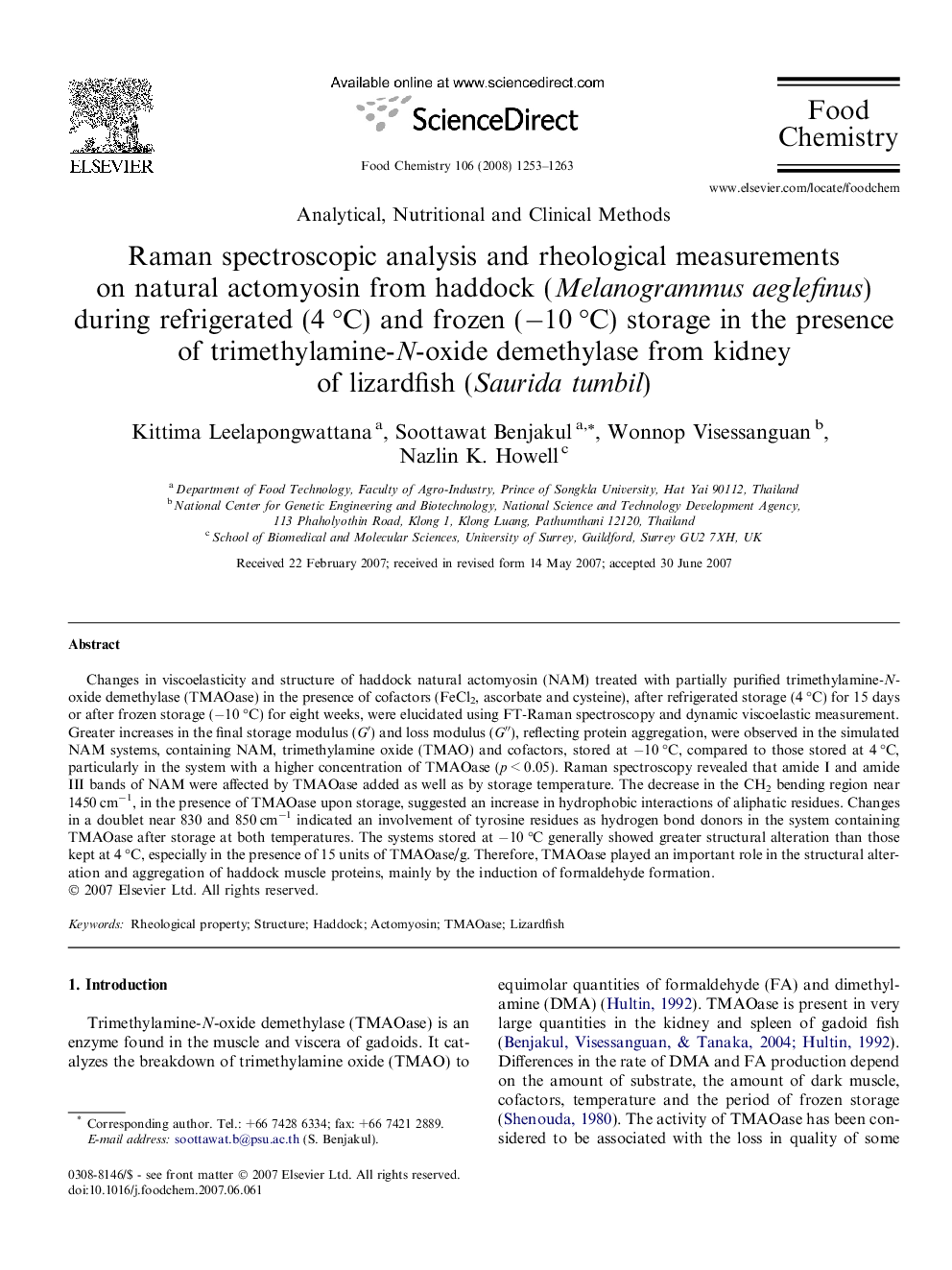| کد مقاله | کد نشریه | سال انتشار | مقاله انگلیسی | نسخه تمام متن |
|---|---|---|---|---|
| 1189619 | 963514 | 2008 | 11 صفحه PDF | دانلود رایگان |

Changes in viscoelasticity and structure of haddock natural actomyosin (NAM) treated with partially purified trimethylamine-N-oxide demethylase (TMAOase) in the presence of cofactors (FeCl2, ascorbate and cysteine), after refrigerated storage (4 °C) for 15 days or after frozen storage (−10 °C) for eight weeks, were elucidated using FT-Raman spectroscopy and dynamic viscoelastic measurement. Greater increases in the final storage modulus (G′) and loss modulus (G″), reflecting protein aggregation, were observed in the simulated NAM systems, containing NAM, trimethylamine oxide (TMAO) and cofactors, stored at −10 °C, compared to those stored at 4 °C, particularly in the system with a higher concentration of TMAOase (p < 0.05). Raman spectroscopy revealed that amide I and amide III bands of NAM were affected by TMAOase added as well as by storage temperature. The decrease in the CH2 bending region near 1450 cm−1, in the presence of TMAOase upon storage, suggested an increase in hydrophobic interactions of aliphatic residues. Changes in a doublet near 830 and 850 cm−1 indicated an involvement of tyrosine residues as hydrogen bond donors in the system containing TMAOase after storage at both temperatures. The systems stored at −10 °C generally showed greater structural alteration than those kept at 4 °C, especially in the presence of 15 units of TMAOase/g. Therefore, TMAOase played an important role in the structural alteration and aggregation of haddock muscle proteins, mainly by the induction of formaldehyde formation.
Journal: Food Chemistry - Volume 106, Issue 3, 1 February 2008, Pages 1253–1263